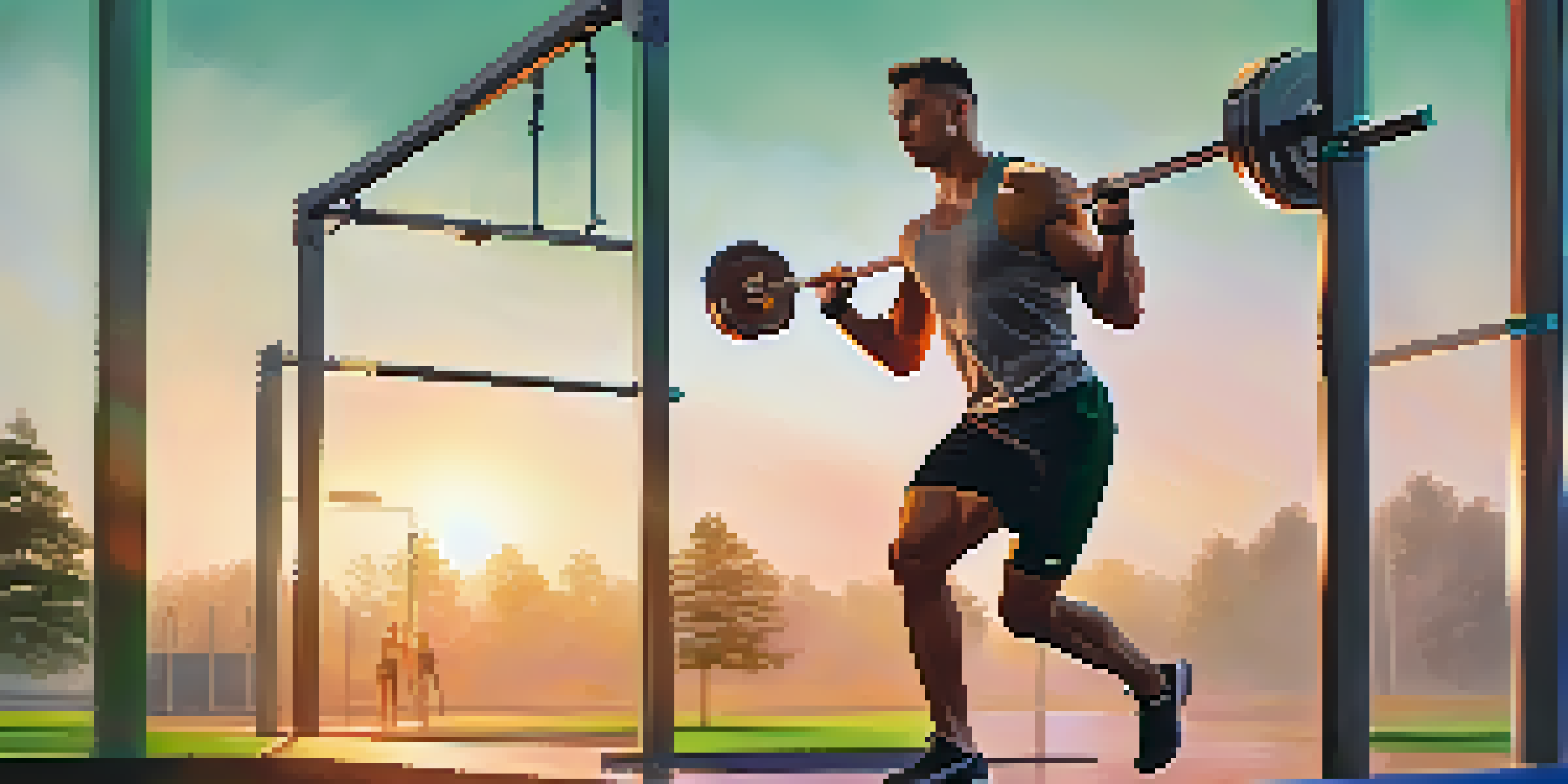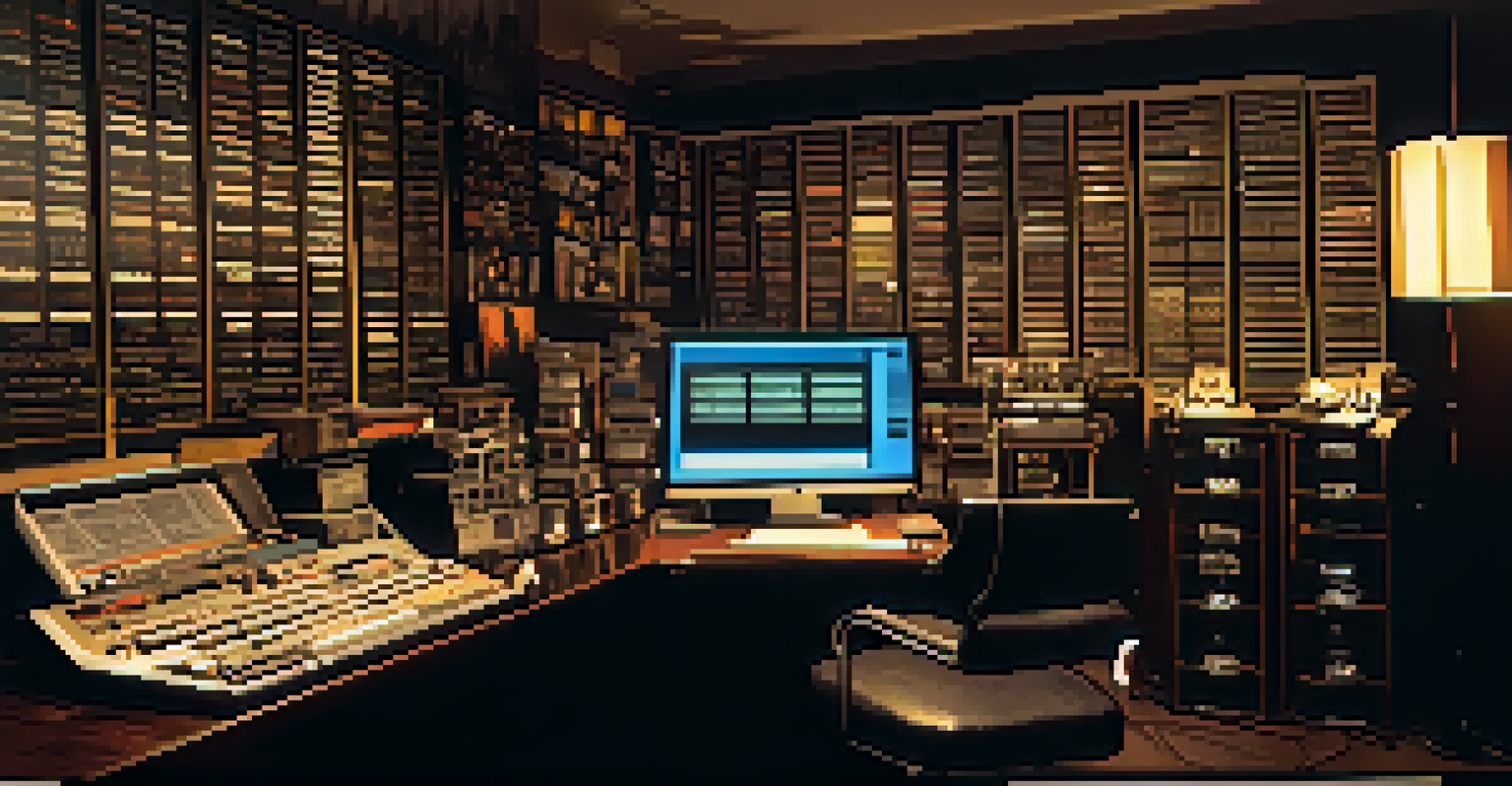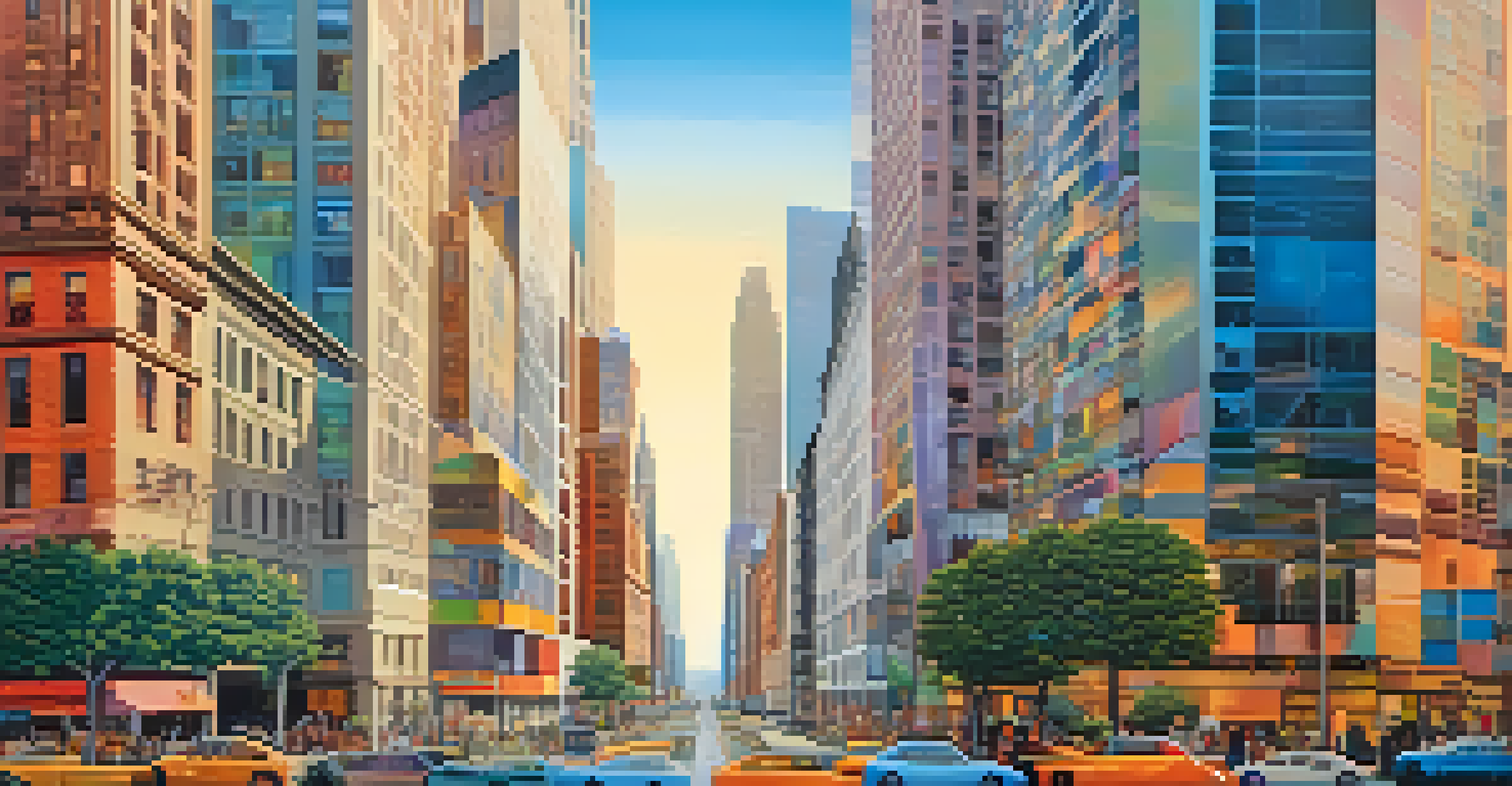Exploring the Art of Montage in Film Editing

Understanding Montage: A Definition and Overview
Montage is a film editing technique that combines various shots to create a cohesive narrative. It allows filmmakers to condense time, establish context, and evoke emotions through visual storytelling. By juxtaposing different images, montage can convey complex ideas without the need for dialogue.
The essence of cinema is editing. It's the combination of images that creates meaning.
For instance, in a sports film, a montage might show a character training over several months, using quick cuts of them running, lifting weights, and practicing their craft. This not only shows the passage of time but also builds anticipation for their eventual success. It's a powerful way to engage the audience and communicate character development.
In essence, montage is more than just a series of clips; it’s a storytelling device that invites viewers to make connections between the images presented. This technique has evolved over the years, influencing how stories are told in cinema.
The History of Montage in Cinema: From Early Days to Now
The concept of montage has roots in early cinema, with pioneers like Sergei Eisenstein pushing its boundaries in the 1920s. Eisenstein believed that the collision of images could provoke thought and stir emotions, leading to his famous films like 'Battleship Potemkin.' His approach to montage emphasized the emotional impact of editing over mere continuity.

As film evolved, so did the use of montage. Directors in Hollywood began to adopt these techniques, blending them into mainstream storytelling. Films like 'Rocky' and 'The Breakfast Club' utilized montage to convey character growth and emotional arcs, making it a staple in various genres.
Montage Enhances Storytelling
Montage is a powerful film editing technique that condenses time and evokes emotions, enriching the narrative experience.
Today, montage is prevalent in everything from action films to documentaries, showcasing its versatility. Understanding its history not only highlights its significance but also inspires filmmakers to experiment with this dynamic editing style.
Types of Montage: Different Approaches to Editing
There are several types of montage, each serving a unique purpose in storytelling. One common type is the 'metric montage,' where the rhythm of the editing is aligned with the music or sound, creating a seamless flow. This technique often amplifies the emotional intensity of a scene, making the visual experience more engaging.
Montage is the essence of cinema, and it is also the essence of life.
Another type is the 'intellectual montage,' which juxtaposes contrasting images to encourage deeper thought. For example, showing a war-torn landscape alongside images of peaceful suburban life can provoke discussions about the nature of conflict and peace. This method challenges viewers to interpret the meaning behind the visuals.
Finally, there's the 'associative montage,' which links images based on thematic connections rather than direct relationships. This type invites viewers to draw their conclusions, enriching their understanding of the narrative. Each type of montage offers filmmakers tools to craft their stories in compelling and creative ways.
The Emotional Impact of Montage: Creating Connection
One of the most powerful aspects of montage is its ability to evoke emotions. By carefully selecting and arranging shots, filmmakers can guide audience reactions effectively. For example, a fast-paced montage of a character's struggles can elicit feelings of empathy and urgency, drawing viewers deeper into the story.
Consider the iconic training montage in 'Rocky'—the rapid cuts of Rocky running up the steps and training hard not only build excitement but also create a sense of hope and determination. This emotional pull is crucial in immersing the audience in the character's journey.
Types of Montage Explained
Different types of montage, such as metric, intellectual, and associative, offer filmmakers diverse tools for creative expression.
Montage transcends mere visuals; it taps into the psychological aspects of storytelling. By manipulating time and space through editing, filmmakers can elicit powerful emotional responses, making the audience feel connected to the characters and their experiences.
Montage in Modern Filmmaking: Techniques and Trends
In contemporary cinema, montage continues to evolve, incorporating new technologies and storytelling techniques. With the rise of digital editing software, filmmakers have greater flexibility in crafting montages that can enhance the narrative in innovative ways. The ability to manipulate time and pacing has never been easier, allowing for more creative expression.
Social media platforms have also influenced montage, as filmmakers draw inspiration from short-form content and quick cuts. This trend is evident in films that use rapid editing styles to maintain viewer engagement, reflecting our fast-paced digital lives. The challenge is balancing this modern approach while retaining the emotional depth that classic montages achieved.
Modern films often experiment with blending different montage styles, creating unique visual storytelling experiences. This trend showcases how the art of montage remains relevant, adapting to new cultural contexts and audience expectations while still honoring its roots.
Famous Montage Examples in Cinema: Learning from the Masters
Many iconic films feature memorable montages that have left a lasting impact on audiences. One standout example is the training montage in 'Rocky,' where a series of rapid cuts showcases the protagonist’s journey from underdog to champion. This sequence not only builds excitement but also beautifully captures the essence of perseverance.
Another example is the 'Time' montage in 'Inception,' where various timelines are interwoven to create a sense of urgency and complexity. This montage effectively illustrates the film's core concept of manipulating time, showcasing the power of editing to enhance narrative depth.
Emotional Connection through Montage
By carefully selecting and arranging shots, montages can evoke strong emotional responses, deepening audience engagement with the story.
These examples highlight the importance of montage in filmmaking and how it can elevate a story. Learning from these masters allows budding filmmakers to explore their creativity and find ways to integrate montage into their own projects, making their storytelling more dynamic.
Creating Your Own Montage: Tips for Filmmakers
Crafting a compelling montage requires careful planning and a clear vision. Start by identifying the emotions or themes you want to convey, as this will guide your selection of shots. Consider how each clip interacts with the others, creating a narrative thread that resonates with the audience.
Additionally, pay attention to pacing and rhythm. The flow of a montage can significantly impact its effectiveness, so experiment with different editing speeds to find what works best for your story. Music can also enhance the emotional weight of a montage, so choose a soundtrack that complements the visuals.

Finally, don't be afraid to break traditional rules. Montage is an art form that thrives on creativity and innovation. Embrace the freedom to experiment, and you might discover a unique style that defines your filmmaking journey.